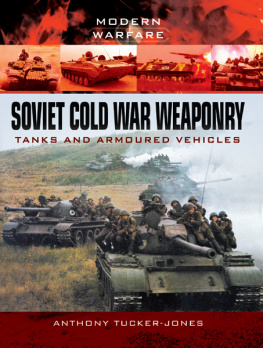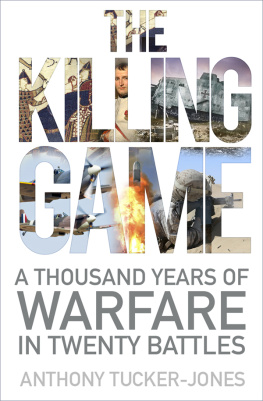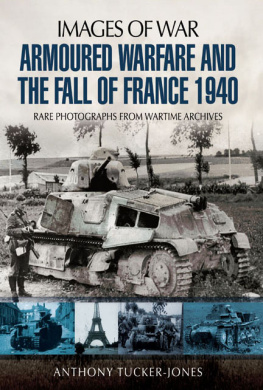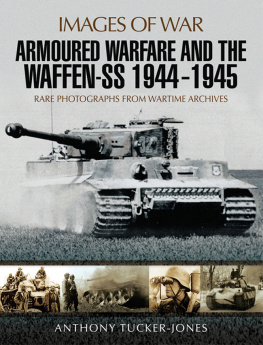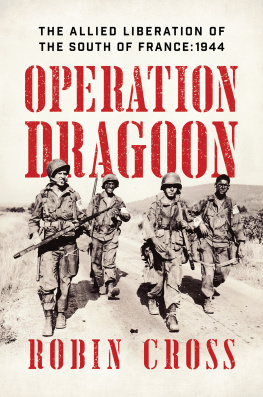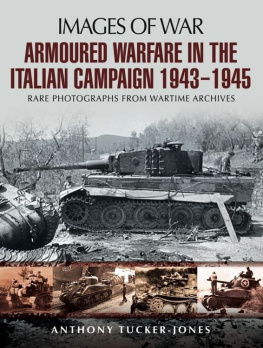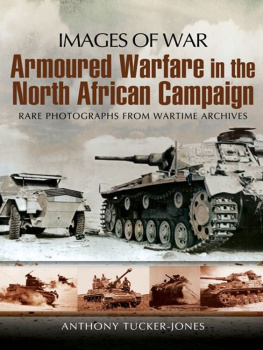
Panzer Mk IIIs outside the city of Toulouse. Following the D-Day landings in Normandy, Blaskowitzs Army Group G lost all its armoured units except for the 11th Panzer Division, which was refitting northeast of Bordeaux. This unit would have to race across southern France and then head northeast to cover the German withdrawal to Belfort and the Franco-German border.
First published in Great Britain in 2016 by
PEN & SWORD MILITARY
an imprint of
Pen & Sword Books Ltd,
47 Church Street,
Barnsley,
South Yorkshire
S70 2AS
Text copyright Anthony Tucker-Jones, 2016
Photographs copyright as credited, 2016
Every effort has been made to trace the copyright of all the photographs. If there are unintentional omissions, please contact the publisher in writing, who will correct all subsequent editions.
A CIP record for this book is available from the British Library.
ISBN: 978 1 47382 146 0
PDF ISBN: 978 1 47388 150 1
EPUB ISBN: 978 1 47388 149 5
PRC ISBN: 978 1 47388 148 8
The right of Anthony Tucker-Jones to be identified as Author of this Work has been asserted by him in accordance with the Copyright, Designs and Patents Act 1988.
All rights reserved. No part of this book may be reproduced or transmitted in any form or by any means, electronic or mechanical including photocopying, recording or by any information storage and retrieval system, without permission from the Publisher in writing.
Typeset by CHIC GRAPHICS
Printed and bound by CPI Group (UK) Ltd, Croydon, CR0 4YY
Pen & Sword Books Ltd incorporates the imprints of Pen & Sword Archaeology, Atlas, Aviation, Battleground, Discovery, Family History, History, Maritime, Military, Naval, Politics, Railways, Select, Social History, Transport, True Crime, Claymore Press, Frontline Books, Leo Cooper, Praetorian Press, Remember When, Seaforth Publishing and Wharncliffe.
For a complete list of Pen & Sword titles please contact
Pen & Sword Books Limited
47 Church Street, Barnsley, South Yorkshire, S70 2AS, England
E-mail:
Website: www.pen-and-sword.co.uk
Contents
Introduction
T he armoured battles fought from the Riviera to the Rhine were characterised by a rapid advance by American and French armoured divisions until they reached the mountains on the Franco-German border. This was part of General Eisenhowers broad front strategy following the Allies defeat at Arnhem. Remarkably, although General Johannes Blaskowitzs German Army Group G had lost most of its panzers to the fighting in Normandy, it was still able to keep the American and French armour at bay in southern France.
Unlike in Normandy, where there was a three-month deadlock following D-Day, the Operation Dragoon landings in the Riviera saw the Allies swiftly overcome the German defences. However, Blaskowitz conducted an exemplary fighting withdrawal, thanks to the actions of the 11th Panzer Division. It was not until the Battle of Arracourt and the creation of the Montlimar and Colmar pockets that the Germans suffered their first major defeats in southwest Europe, opening the way into Germany across the Rhine.
The British Prime Minister Winston Churchill announced the Liberation of France to the House of Commons on 28 September 1944:
An American and French landing on the Riviera coast, actively assisted by a British airborne brigade, a British air force and the Royal Navy, has led with inconceivable rapidity to the capture of Toulon and Marseilles, to the freeing of the great strip of the Riviera coast, and to the successful advance of General Patchs army up the Rhne valley. This army, after taking over 80,000 prisoners, joined hands with General Eisenhower, and has passed under his command.
The plan had been to capitalise on the Allies success in Normandy with an invasion of the Riviera in mid-1944, with the intention of trapping the Germans as they had done in the north. Churchill, the wily old politician, avoided the inconvenient truth that most of the German army in southern France had escaped the clutches of the Allies and was now offering a determined rearguard defence west of the Rhine.
In the south there was no hiding Adolf Hitlers inability to effectively hold the coast. General Blaskowitzs Army Group G, with its headquarters in Toulouse, had responsibility for General Kurt von der Chevalleries 1st Army and General Friedrich Wieses 19th Army stationed on the Biscay and Riviera coasts respectively, but his command was fatally weakened by the requirement to send a steady stream of reinforcements north to counter the D-Day landings. Those units from Army Group G sent to Normandy suffered around 40,000 killed or wounded, and none of the survivors was reassigned to Blaskowitz.
In early June 1944 Blaskowitzs command totalled fewer than twenty divisions but by mid-August it had been reduced to just seven: six infantry and one panzer, although four of the infantry units were not combat ready. Chevallerie was left with a single corps, while Wiese only had the 11th Panzer Division and some second-rate static infantry divisions. During the run-up to the Allied invasion of the Riviera Blaskowitz had about 30,000 troops facing the invasion beaches, although within a few days march there were over 200,000.
Blaskowitz knew that time was of the essence; he could not hope to hold the Allies on the coast and would have to conduct a swift fighting withdrawal into the French interior. In the wake of American attempts to break out of the Normandy bridgehead, Colonel Horst Wilutzky, Blaskowitzs operations officer, attended a briefing at the headquarters of Field Marshal Gnther von Kluge, CinC West, on 1 August 1944. Wilutzky and General von Gyldenfeldt, Blaskowitzs chief of staff, had concluded that there was no military justification for holding German units in southern France any longer, and Blaskowitz and Kluge agreed, but Hitler pointlessly insisted that Army Group G stay put for another two weeks, by which time it was almost too late.
Blaskowitz put his cards on the table and informed Kluge that because of the release of men and weapons [Army Group Gs] defensive power has become considerably smaller and a successful defence of the coast is no longer guaranteed. On 8 August Kluge and his chief of staff, General Hans Speidel, decided it was imperative that Blaskowitz be saved. Its time to abandon the South of France, Kluge urged. Why leave the 1st Army on the Atlantic now we know the outcome of the war is at stake. Let us put Army Group G on the line SeineLoireGienNeversGex. Lets abandon Provence. Despite his efforts, it would be another week before any withdrawal was given the green-light by Hitler.
By the summer of 1944, in the wake of the Allied landings on the French Riviera, Hitlers forces were in full flight from southern France. He watched in dismay as his defences in the region unravelled. To make matters worse, German resistance in Normandy was almost at an end. In the south the swift advance of General Jean de Lattre de Tassignys French 1st Army and General Alexander Patchs US 7th Army caught Hitler by surprise. Leaving Toulon and Marseilles to the French forces, Patchs advance guard raced to reach the city of Grenoble on 22 August, with the objective of linking up with elements of General George Pattons US 3rd Army near Dijon.
The sole remaining escape route for Hitlers troops lay in the network of roads and rail lines in the 24km-wide Belfort Gap, between the Vosges mountains to the north and the Jura mountains to the southeast. Hitler dispatched the 11th Panzer Division to Besanon on the evening of 5 September to cover the retreating German 19th Army as it moved into Belfort. Hitlers high command also ordered the 30th Waffen-SS Division to France. This arrived in Strasbourg on 18 August with instructions to hold the Belfort Gap and counter any Free French units operating in the area.
Next page



